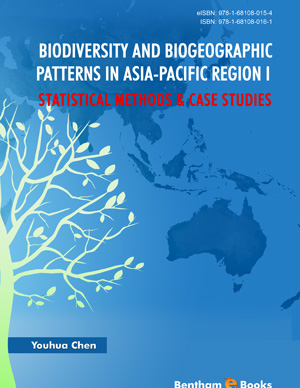Abstract
In the present chapter, a phylogenetic ancestral endemism index (PAE) was proposed to effectively incorporate the information derived from ancestral ranges of species. As a comparison, other previously proposed phylogenetic indices, including evolutionary distinctiveness (ED), taxonomic distinctiveness (TD), phylogenetic endemism (PE) and node-based I and W indices were all implemented. Distribution of eleven Psychotria endemic plants in four island groups of Hawaii was used as an example to evaluate and compare differences between PAE and other phylogenetic diversity indices when setting conservation priorities of species. My results showed that PAE is closely related to ED index, but distinct to other indices. PAE might be the only phylogenetic diversity index incorporating the information of ancestral states to evaluate conservation importance of species currently.
Keywords: Ancestral ranges, ancestral state reconstruction, conservation priority, evolutionary heritage, Hawaii islands, historical biogeography, phylogenetic diversity, phylogenetic endemism, phylogeography, plant endemism, species evolution.






















